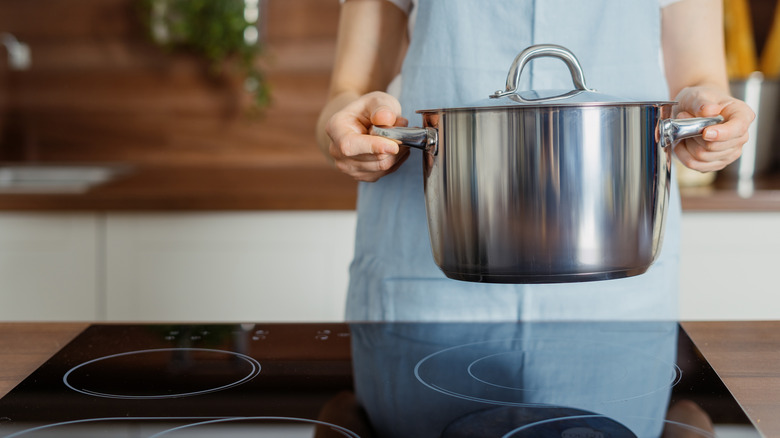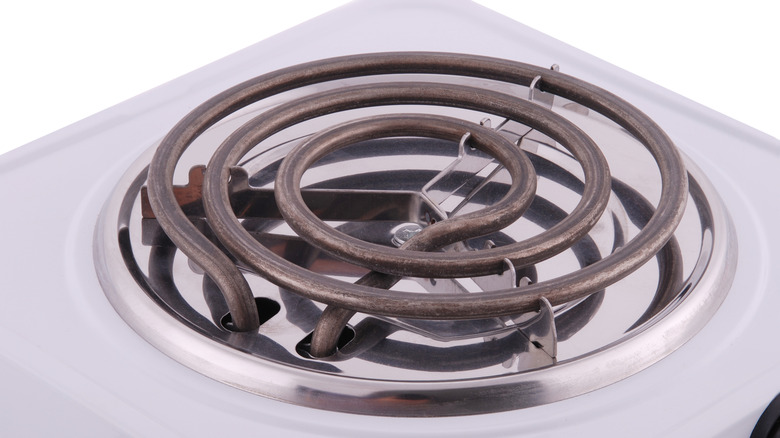An Expert Explains The Difference Between Induction And Electric Stoves
In the modern world of kitchen appliances, few things have transformed so much as the range. With all the new innovations in stovetop tech, it can be difficult to understand the nuances between one surface to the next. It's particularly hard to distinguish between new electric stovetops and induction stovetops.
While old-fashioned electric ranges have obviously raised coils, modern versions can have a flat ceramic surface delineated only by images of circles to identify the burners, just like an induction cooktop. Even though the appearances may seem identical, the ways these stovetops work are vastly different. With that in mind, we reached out to expert Mina Lee, the Senior Product Marketing Manager of Thermador Cooking, a company that sells a range of cooktops, including induction stoves, like its recently debuted Pro Harmony Liberty Induction Range. According to Lee, the key difference between the two is that induction heating uses the power of magnetic currents to directly heat pots and pans. Electric stovetops, on the other hand, have those heated coils situated either on top or beneath a ceramic surface. The coils warm the pots and pans in a rather less direct form of heat transference. Sounds simple enough, but let's further break down what separates these two types of cooktops.
A tale of two stovetops
There are pros and cons to both stovetops. One of the perks that Lee likes about the induction burner is the amount of control it gives a cook. "Induction cooktops ... offer precision and fast, more responsive temperature control," she says. For this reason, induction cooktops work particularly well in high-altitude kitchens. No matter how high you go in elevation, the induction cooktop will put out the same amount of energy and heat. On the flip side, electric stovetops are harder to control and take longer to heat and cool.
However, while induction cooktops offer efficiency and control, they won't heat all types of cookware. Cast iron, most stainless steel, and most ceramic-coated cookware will work with an induction burner, but other materials like copper or cheap aluminum won't heat up because they don't possess the magnetic layer needed to work with the induction current. Induction burners also won't heat a round-bottomed pan like a wok. So for some, the electric stovetop is still more convenient if you want to be able to use any pot or pan you have on hand.
As of right now, electric cooktops are more common as they've been around since 1892, while the induction range is the new kid on the block, first debuting in the 1970s. The induction stovetop is finally gaining steam, though, with many chefs lauding its energy efficiency.

